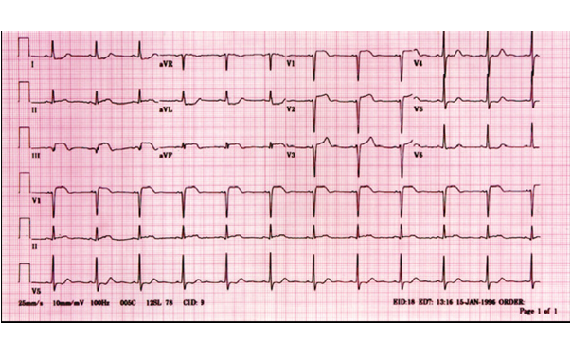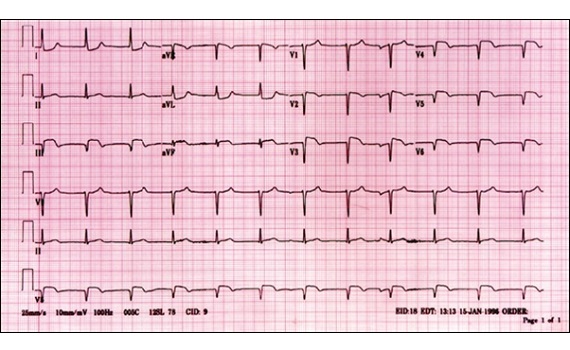Here’s a quick refresher from the clinical team on managing patients suffering a STEMI with right ventricular involvement (RVI)…
Statistics:
- around 50% of inferior STEMIs have RVI, up to 13% of anterior STEMIs have RVI and only about 3% have RVI without any other territory involved
- less than 50% of RVIs have haemodynamic compromise, but it is still the most common finding
- inferior infarction with RVI carries a high mortality rate of up to 30%, compared to an uncomplicated inferior infarction which has around a 5% mortality rate.
Diagnosis:
- if the 12-lead shows an inferior STEMI, always record an RV4 to identify if there is right ventricular involvement. This would show as ST elevation in this extra view. An RV4 would be recorded by repeating the ECG with the V4 lead moved to the mid-clavicular line on the right side of the chest.
- ST elevation in this lead would confirm presence of RVI
- other clues to RVI on a standard 12-lead include ST elevation V1-V3 in an inferior infarct, and ST elevation being greatest in lead three.
- clinical signs of raised jugular pressure, clear lung fields and hypotension are all signs of RVI
- if there is bradycardia as part of the clinical picture, atropine is indicated if the patient is hypotensive.
Standard 12-lead with inferior STEMI and RVI

Note the ST elevation in V1-V3, and the maximal ST elevation in lead three. This is a typical pattern of an inferior STEMI with RV involvement.
Same patient with right sided V leads

In this ECG, all V leads are placed across the right side of the chest. Please note maximal ST elevation in RV4. It’s recommended to only place V4 in the right-sided position pre-hospitally.
Treatment
- be cautious with the use of nitrates, opiates and diuretics as they will reduce pre-load and subsequently cardiac output. It is important to obtain the ECG before treatment so we know if caution is required
- rapid reperfusion is required
- if the patient’s BP is low then the use of fluids is indicated to increase filling pressure
- you should use an initial bolus of 250mls of 0.9% NaCl followed by a further 250mls if there are signs of improvement in blood pressure.
Nitroglycerin is generally indicated in myocardial infarction because of the drug’s vasodilatory effects on blood vessels. This could lead to decreased ischemia, decreased myocardial oxygen consumption and subsequently, an improvement in blood flow to the myocardium.
However, vasodilators, diuretics, and morphine are not well tolerated by patients with RVI and may lead to severe hypotension. The effects of these medications may cause a reduction in preload by decreasing filling pressures and subsequently decreasing cardiac output.
Therefore volume loading with a sodium chloride solution is recommended as the initial therapy in RVI. Progressive volume loading can produce an incremental increase in right-sided filling pressures, systolic blood pressure and cardiac output. Fluid volume loading is based on Starling’s law, which states that the greater the amount of stretch of the ventricle, the more forceful the contraction.
Published 21st December, 2015


